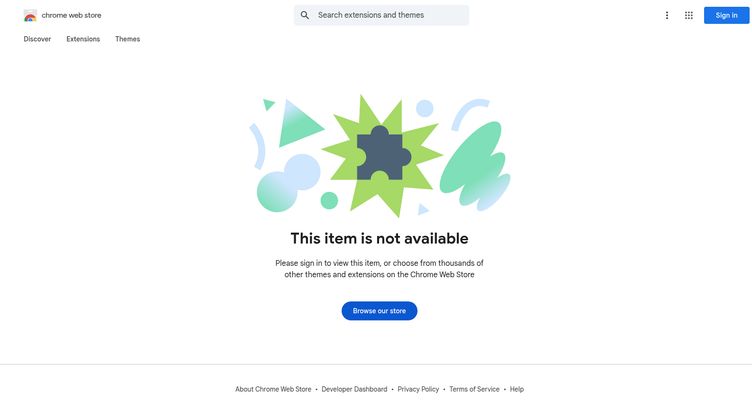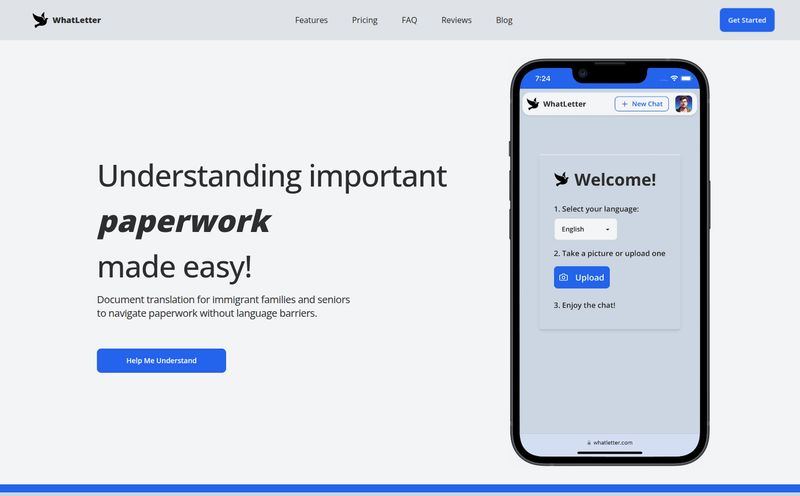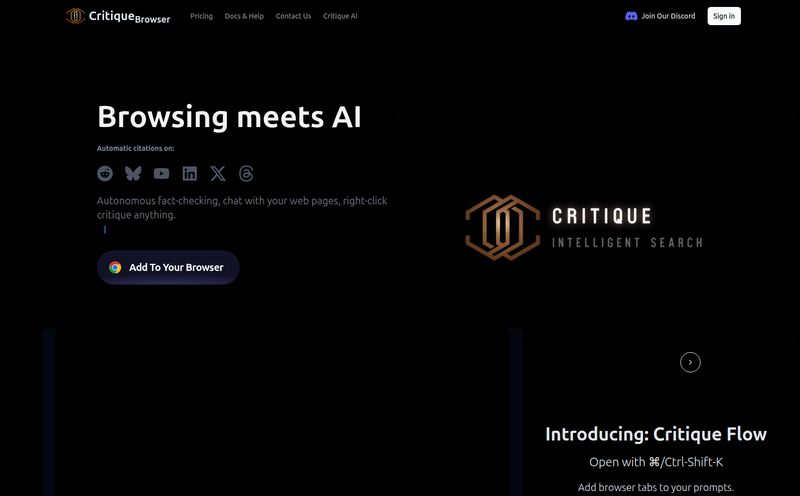Alright, let’s talk. You and me. We both know the feeling. You open YouTube, ready to catch up on one, maybe two videos from your favorite creators. An hour later, you emerge from a rabbit hole of video essays, tech reviews, and late-night show clips, wondering where the time went. Your subscription feed? It's a digital hydra. For every video you watch, two more appear.
It’s the content creator’s dream and the viewer’s dilemma. So much good stuff, so little time. For years, we've been looking for a cheat code. A way to absorb all that knowledge and entertainment without dedicating a full-time job to it.
And for a brief, shining moment, it seemed like a new wave of AI tools had the answer. I stumbled across one, in particular, a Chrome extension that made a simple, beautiful promise: it would summarize your YouTube subscription videos into concise, easy-to-read snippets. The dream, right? A personal assistant for your content consumption. What a concept.
The Brilliant Idea: Your Personal YouTube Digest
Let's paint the picture. Imagine logging in and instead of a wall of thumbnails vying for your attention, you get a clean, skimmable list. MKBHD's latest phone review? Here are the key takeaways. A two-hour history documentary? Here's the TL;DR. It was designed to be the ultimate time-saver, letting you quickly identify the videos you really wanted to invest time in and get the gist of the rest.
In theory, the benefits were obvious. You could stay on top of trends in your industry, keep up with dozens of creators, and filter out the clickbait from the truly valuable content. It was like having a research assistant built right into your browser. I was genuinely excited about this. It felt like the kind of smart, targeted AI application that actually solves a real, everyday problem, not just some tech-for-tech's-sake gimmick.

Visit YouTube Summarizer
Then, The Digital Tumbleweed: 'This Item Is Not Available'
So, I went to check it out again recently, maybe recommend it to a client struggling with market research. And I was greeted by… nothing. A digital ghost town. The dreaded “This item is not available” page on the Chrome Web Store. It's a message I've seen countless times over the years, the final epitaph for a thousand great ideas.
Digging a little, the reason became clear. The tool’s own description carried a clue, a little S.O.S. from the developer: “no available server.” And that, my friends, says it all. The lights are on, but nobody’s home. The engine is there, but there’s no fuel. It's a classic startup story. A brilliant concept that likely ran headfirst into the brick wall of operational costs. Running AI summarization isn't cheap. Every video summary requires processing power, which means server time, which means money. If the user base grows faster than the revenue, the servers get shut down. Simple as that.
Why Do So Many Browser Extensions Die?
It's a tough world out there for a browser extension. People often think of them as simple little add-ons, but a powerful tool like this is a full-fledged service. It needs constant maintenance to keep up with YouTube's ever-changing layout, API updates from Google, and of course, the server costs we just talked about. It's not a one-and-done project; it’s a commitment. And sometimes, for solo devs or small teams, that commitment becomes unsustainable.
The Awkward Truth About AI Summaries
Even when these tools are working, let's be honest—they're not perfect. The effectiveness of any summarizer hinges entirely on its algorithm. I’ve tested a few in my time, and the results can be a mixed bag.
For a straightforward “how-to” video or a news report, they can be incredibly accurate and useful. But what about comedy? Or sarcasm? Or a video where the most important information is conveyed through visual tone and subtext? AI often misses that. I once got a summary of a satirical video that presented the jokes as serious facts. It was… confusing. The tech is getting better, no doubt, but it still lacks that human nuance, the ability to read between the lines. It can give you the what, but not always teh why or the how it felt.
So, Where Do We Go From Here? Finding Alternatives
Just because this specific extension went dark doesn't mean the dream is dead. The demand for video summarization is huge, and plenty of other developers are trying to crack the code. If you're looking for a replacement, here's what I'd suggest keeping an eye out for:
Look for tools that offer more than just a block of text. The best ones I've seen provide summaries with clickable timestamps. This is a fantastic feature, letting you read a key point and immediately jump to that exact moment in the video. Some also generate a full, searchable transcript, which is a massive boon for research. Also, consider the model. Is it a browser extension that works on-page, or a separate website where you paste the URL? Both have their pros and cons regarding convenience and features. And of course, look at the pricing. Many operate on a freemium model, offering a few free summaries per day or week before asking you to subscribe. Find one that matches your usage.
The Future is Skimmable
This little ghost in the Chrome store isn't a failure, not really. It's a signpost. It points to a future where we interact with content in a completely different way. We're moving away from purely linear consumption. We want control. We want to be able to scan, search, and sample long-form content efficiently.
AI tools are becoming our personal content curators, our digital sommeliers who can offer us a taste before we commit to the whole bottle. While the technology is still finding its feet, the underlying demand is undeniable. Someone will crack this, and when they do, it'll change the way we learn and consume media online. It's an exciting, if sometimes frustrating, space to watch.
Frequently Asked Questions (FAQs)
What is a YouTube video summarizer tool?
A YouTube video summarizer is typically a software application or browser extension that uses artificial intelligence (AI) to analyze the audio or transcript of a YouTube video and generate a short, text-based summary of its key points. The goal is to save you time by giving you the main ideas without you having to watch the entire video.
Why was this specific Chrome extension removed?
While we can't know for sure, the evidence points to operational issues. The mention of 'no available server' suggests the developer could no longer afford the server costs required to run the AI summarization for all its users. This is a common challenge for free or low-cost tech tools that require significant backend processing.
Are YouTube summary tools safe to use?
Generally, yes, but you should always be cautious. When installing any browser extension, check the permissions it requests. A summarizer will need access to the content on youtube.com, which is normal. However, be wary of extensions that ask for overly broad permissions (like access to all your website data). Stick to tools from the official Chrome Web Store and check user reviews.
Can AI perfectly summarize any type of video?
No, not yet. AI is excellent at summarizing informational, structured content like tutorials, lectures, and news reports. However, it often struggles with content where nuance, sarcasm, humor, or visual storytelling are important. It can miss the intended tone or misinterpret artistic choices, so always take AI summaries with a grain of salt for creative content.
How much do YouTube summarizer tools typically cost?
Pricing models vary. Many tools offer a 'freemium' model, giving you a limited number of free summaries per month before requiring a paid subscription, which might range from $5 to $15 per month. Others might be completely free but supported by ads, or some might offer a one-time purchase fee, though this is less common for services with ongoing server costs.
Is using a summarizer against YouTube's Terms of Service?
As of now, using a tool to summarize a video for personal use does not appear to violate YouTube's Terms of Service. These tools are essentially sophisticated note-takers. The issues would arise if you were to take these summaries and republish them as your own content without attribution. But for personal productivity and research, you're in the clear.
A Final Thought
So, we pour one out for the fallen extension. A good idea that just couldn't clear the financial hurdles. But its disappearance doesn't leave a vacuum; it creates an opportunity for the next, more sustainable, more robust tool to take its place. The quest for the perfect content summarizer continues, and as an SEO and a chronic YouTube addict, I’ll be right here watching.
Reference and Sources
- Chrome Web Store - The official marketplace for Google Chrome extensions.
- YouTube Terms of Service - Official policy documentation for using the YouTube platform.



